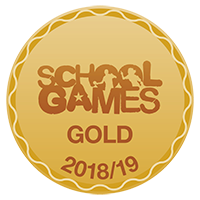Upper School Home Learning 3rd May 2021
|
English Reading You MUST make sure that you are reading every day! Make sure you create a Home Reading Thread on Tapestry and update it each day to show us what you are reading. Throughout the week, you need to also complete either: 1 activity on ReadTheory and 1 activity on BugClub; 2 activities on ReadTheory; or, 2 activities on BugClub.
Writing |
|||||||||
| Monday | Tuesday | Wednesday | Thursday |
Friday |
|||||
|
Can I read and understand Macbeth? (Two Days) Read the extracts from Macbeth by Andrew Matthews on Tapestry and answer the comprehension questions. (Thane is a title of European nobility, similar to an earl or duke). In Macbeth it becomes a title that drips with blood, sorrow and a stern warning: don’t let the pursuit of power control and corrupt you.
Can I analyse the character of Macbeth and Lady Macbeth? Watch the video clips listed on Tapestry and create character profiles based on their behaviours. Why does Lady Macbeth wish Macbeth had never become king this way? Explain Macbeth feelings when he sees Banquo.
Can I describe the features of a letter? Look at the examples of letters provided and highlight key features: address, date, formal greeting and ending, introduction, middle and closing paragraphs. Read the letter to Lady Macbeth from Macbeth and compare the letter to the other examples.
|
|||||||||
|
Spelling Rule: Challenge Words There are two activities uploaded onto Tapestry for you to complete and there are games on Spelling Shed for you to play as well.
|
|||||||||
|
Maths |
|||||||||
|
Year 5
|
|||||||||
|
Bank Holiday
|
Can I recognise properties of quadrilaterals? Children name quadrilaterals including a square, rectangle, rhombus, parallelogram and trapezium. They describe their properties and highlight the similarities and differences between different quadrilaterals. Children draw quadrilaterals accurately using knowledge of their properties.
|
Can I identify lengths and angles in shapes? Children look at squares and rectangles on a grid to identify right angles. Children use the square grids to reason about length and angles, for example half a right angle is 45 degrees. |
Can I distinguish between regular and irregular polygons? Children distinguish between regular and irregular polygons. Once children are confident with regular and irregular polygons, they can reason about angles and lengths of a polygon based on the properties. |
Can I Identify 3D shapes, including cubes and other cuboids, from 2D representations?
Children also look at properties of 3D shapes from 2D projections, including shadows and elevations. |
|||||
|
|
|||||||||
|
Bank Holiday |
Can I draw lines and angles accurately? Children will be developing their skills of drawing lines accurately to the nearest millimetre. They will use their protractor to draw angles of a given size and continue to use precise language to describe the types of angles they are drawing. |
Can I calculate angles on a straight line? Children will calculate missing angles on a straight line building on their knowledge of right angles. |
Can I calculate angles around a point? Children will being calculating missing angles around a full turn and how to use their knowledge to calculate missing angles using bar models. |
Can I recognise and calculate vertically opposite angles? Children will build upon their knowledge of angles on a straight line and around a point to calculate the value of a missing vertically opposite angle.
|
|||||
|
History Can I use evidence to build up a picture? Use the resources to determine what period of time we are studying now. Read through the resources to find out how the Tudors came to the throne of England. You need to read the sources of information about Henry VIII and word collect words to build up a description of Henry VIII. Remember a description is more than just what someone looks like! Use your word collecting to write a description of Henry VIII.
Can I analyse the reasons for, and the results of, historical events and changes? (2 days) Read through the information about the six wives of Henry VIII. Now have a look at the statements on Tapestry – can you match the statements to the correct wife? Turn your information into a newspaper report explaining to your reader what has happened.
|
|||||||||
|
PE See online Resources – Spring Term Home PE (F) Choose from the 10 activities in Pack F – try as many as you can and record your times and scores on your PE Active Planner to put on Tapestry to share with your teacher.
|
|||||||||
|
Computing Can I explore the grammar quizzes and Text Toolkit software?
Have a look at the Year 3 to Year 6 Grammar Quizzes that are set as 2Dos on Purple Mash and then use the help video section to create your own grammar games using the Word Spot and Cloze tools.
|
|||||||||
|
RE
Can I retell the story of The First Temple in Jerusalem? Download the artist impressions of the temple from Tapestry and record any questions that you might have about the first temple. Read the story of Solomon’s Temple and upload your respond to these questions: How do you think the Jewish people felt after the first temple was built? How did God support Solomon when he was feeling afraid? Is there a time when you were feeling scared and God has supported you?
|
|||||||||
|
PHSE Can I recognise how rights are balanced against responsibilities? In this lesson pupils will develop an understanding of the terms ‘rights’ and ‘responsibilities’ and how they balance one another (Activity 1). They will then discuss and prepare a class charter (Activity 3) that reflects their rights and responsibilities as pupils.
|
|||||||||
|
MFL
|
|||||||||
|
If you require any additional support please contact your teacher via Tapestry |
|||||||||
















